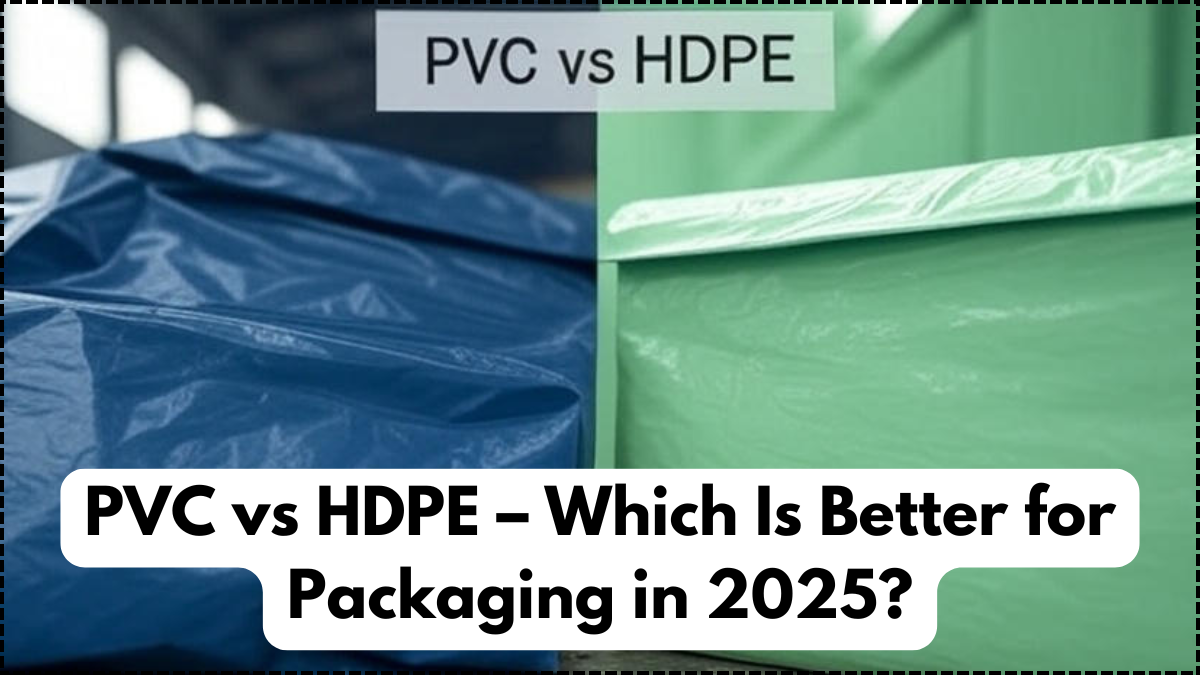Choosing the right material for packaging has become more important than ever in 2025, especially as companies seek sustainable, durable, and cost-effective solutions. Two of the most widely used plastic polymers in the packaging industry today are PVC (Polyvinyl Chloride) and HDPE (High-Density Polyethylene). When conducting an industrial comparison, understanding their strengths, weaknesses, and environmental impact is crucial to making informed decisions.
Both materials are found in various sectors—food packaging, medical supplies, consumer goods, and construction—but which is the better fit for today’s packaging needs? This article offers a complete PVC vs HDPE comparison, evaluating aspects such as durability, recyclability, chemical resistance, and cost.

Understanding PVC and HDPE
PVC is a synthetic plastic polymer made from vinyl chloride. It’s known for its rigidity and is commonly used in bottles, blister packaging, and containers. HDPE, on the other hand, is a thermoplastic polymer made from petroleum. It is lighter and more flexible than PVC and widely used for milk jugs, detergent bottles, and food packaging.
Key characteristics of both include:
- PVC: Rigid, strong, but can release toxins if not properly processed.
- HDPE: Lightweight, recyclable, and highly resistant to impact and moisture.
Both materials have evolved with industry innovation, but they remain central to packaging solutions across various industries.
Detailed Comparison Table: PVC vs HDPE
| Feature | PVC | HDPE |
|---|---|---|
| Full Form | Polyvinyl Chloride | High-Density Polyethylene |
| Flexibility | Moderate | High |
| Chemical Resistance | Moderate | Excellent |
| Environmental Impact | Higher (may release chlorine) | Lower (fully recyclable) |
| Cost Efficiency | Moderate | Very cost-effective |
| Common Usage | Blister packs, rigid containers | Milk jugs, flexible food packaging |
| Recyclability Level | Medium (PVC #3, limited recycling) | High (HDPE #2, widely accepted) |
This industrial comparison clearly shows that while PVC offers rigidity, HDPE leads in recyclability and environmental performance, making it more suited to modern eco-conscious applications.
Environmental and Industrial Impacts
As sustainability becomes a key concern for industries, the environmental performance of packaging materials has gained more attention. Between PVC vs HDPE, the latter is often seen as the greener option due to its easier recyclability and fewer harmful emissions during production.
PVC, although strong, is increasingly being phased out in certain industries due to its chlorine content and challenges in safe disposal. HDPE, being part of recycling group #2, is accepted in most global recycling programs and supports circular economy practices.
Moreover, HDPE offers versatility in both industrial packaging and consumer retail, making it an all-around favorite for 2025.
Packaging Trends and Industry Preferences
Packaging companies are rapidly shifting toward more eco-friendly and cost-effective materials. In the PVC vs HDPE debate, HDPE often comes out ahead in terms of adaptability, safety, and compliance with new environmental regulations.
Industries preferring HDPE packaging in 2025 include:
- Food and beverage
- Pharmaceuticals
- Home and personal care
- Agriculture and chemical transport
However, PVC still has niche applications where rigidity and transparency are key, such as in medical packaging and durable product containers.
Conclusion
In the PVC vs HDPE showdown, HDPE is emerging as the preferred material for packaging in 2025 due to its cost efficiency, high recyclability, and low environmental impact. While PVC still holds its ground in specific industrial uses, businesses aiming to align with sustainability goals are increasingly opting for HDPE.
This industrial comparison highlights that each material has its place, but for industries focused on future-ready packaging, HDPE provides a safer and smarter choice.
FAQs
What is the main difference between PVC and HDPE?
PVC is more rigid and has moderate chemical resistance, while HDPE is flexible, lightweight, and highly resistant to chemicals and moisture.
Is HDPE safer for food packaging than PVC?
Yes, HDPE is considered food-safe and widely used in the food and beverage industry due to its non-leaching properties.
Which is more environmentally friendly – PVC or HDPE?
HDPE is more eco-friendly as it is easier to recycle and produces fewer emissions during production.
Can both PVC and HDPE be recycled?
Yes, but HDPE is more widely accepted in recycling programs. PVC has limited recyclability and is often excluded from municipal recycling.
Which industries still use PVC for packaging?
PVC is still used in the pharmaceutical, medical, and electronics industries where rigidity and clarity are required.
Click here to know more